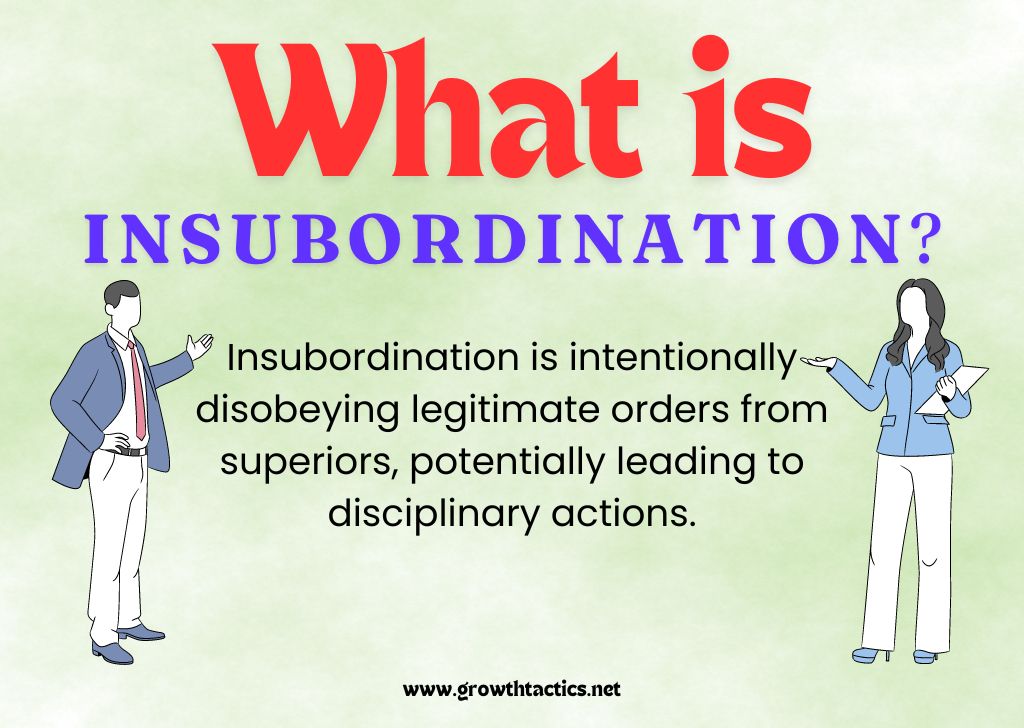Dealing with challenging employees is one of the most difficult and frustrating aspects of managing a team. With different personality types and work styles all interacting in the workplace, conflicts are inevitable. Managers need to learn strategies for working effectively with various types of difficult team members to maintain a positive work environment and productivity.
In this article, we will explore the 7 most challenging employee types managers are likely to encounter. Read on to see if you recognize any of these challenging personality types from your own experience, and learn strategies for handling them. Being able to identify and address problem behaviors will make you a more effective leader.
Jump To Section
The Know-It-All

Dealing with employees who believe they know more than everyone else and argue constantly can be incredibly frustrating. The “Know-It-All” refuses to accept other perspectives and will go head-to-head with anyone for any reason. They will never stop arguing until they “win” the debate.
As a manager, it’s important to establish your authority and set clear expectations with the Know-It-All employee. Make it clear their behavior is harmful to workplace culture and productivity. Guide an intentional conversation about how their constant arguing makes it difficult for others to collaborate. Establish consequences if the behavior does not change, such as limiting their responsibilities or access to certain projects.
However, also take time to understand what drives their need to be right. Provide opportunities for the Know-It-All to showcase their skills through challenging tasks or projects relevant to their strengths. Acknowledge their expertise, but reiterate that listening to others is a critical skill as well. With patience and clear communication, it may be possible to shift their perspective over time.
The Chronic Complainer

The chronic complainer finds fault with everything and everyone. They spread negativity throughout the office and lower morale. This employee type tends to vocalize every grievance, big or small, often in a passive-aggressive way. For example, they might say, “I guess nobody cares about keeping the kitchen clean” rather than directly addressing the person who left a mess.
Chronic complainers can drain productivity and positivity from the work environment. Managers need to address the behavior promptly. Start by having a one-on-one conversation to understand the root issues causing the constant complaints. Are there valid problems that need solutions? Or is the employee simply predisposed to dissatisfaction? Provide clear expectations about maintaining a positive attitude at work. Explain how the negativity affects others and hurts productivity or morale. Offer to address legitimate concerns privately rather than aired publicly as complaints. If the behavior persists, be clear about the consequences, such as limiting the employee’s interactions with others or disciplinary action.
The Slacker

The slacker is the employee who does the bare minimum to get by and needs constant motivation and oversight to complete tasks. This employee often procrastinates, misses deadlines, and produces mediocre work. Slackers can be challenging because they require a lot of management effort to ensure they are meeting expectations.
Some strategies for dealing with slackers include:
- Setting clear expectations for their role and responsibilities. Make sure they understand what successful performance looks like.
- Breaking larger projects into smaller, more manageable tasks with mini deadlines. This helps avoid procrastination.
- Following up frequently on the status of assignments. Don’t allow them to get too far behind.
- Providing feedback when expectations are not met. Be direct about poor performance.
- Avoiding micromanaging. Give support and guidance but allow some autonomy.
- Rewarding positive progress and results. Use carrots along with sticks.
- Considering restructuring their role if they persistently underperform. Not everyone fits every job.
The key is addressing poor performance promptly and directly. Make expectations clear, provide support, but also be prepared to impose consequences. With the right balance of support and accountability, slackers can often improve.
The Bully

This challenging employee type often intimidates, undermines, and abuses their colleagues. They create a toxic work environment and are often the office bullies. They frequently undermine others’ work and use their emotions to accomplish tasks or projects outside of their job description.
For managers, it’s important to identify bullying behavior and establish clear organizational policies against it. If you’ve worked with someone who belittles others and makes inappropriate comments, you’ve dealt with this difficult personality type.
Managers need to make it clear this behavior will not be tolerated. Set clear expectations for appropriate conduct and outline consequences for bullying. Have an intentional conversation about the problem behavior and establish what will happen if it does not change. Give the employee time to understand what drives their actions. Continually putting out fires from a bully is draining – be prepared to part ways if their behavior remains harmful.
Though rarely easy, dismissing a toxic employee can improve culture. When you see a bully approaching, name the behavior and state clearly it’s unacceptable. Avoid issuing threats, but be direct that their actions are harmful. Let the employee know you’ll update your choices if progress isn’t made. Performance appraisals need specific documentation on bullying.
The Insubordinate Employee

Insubordinate employees refuse to follow policies, and directions, or accept new duties outside their perceived role. This challenging employee type believes they know best and will push back against any manager requests they deem unreasonable.
Common traits of insubordinate employees include:
- Ignoring manager instructions or company policies they disagree with
- Arguing when given feedback or performance evaluations
- Consistently complaining about tasks assigned to them
- Refusing to take on additional job responsibilities
Insubordination can be incredibly frustrating for managers. However, the key is addressing it strategically, not emotionally. Start by having a direct, private conversation to understand why the employee resists direction. Explain how their behavior damages the team and slows progress. Offer to find compromises on responsibilities if possible.
If the employee’s attitude does not change, be clear about the consequences of continued insubordination, like disciplinary action. Make sure HR supports any disciplinary measures if needed. With an insubordinate employee, managers must remain calm but firm in upholding standards.
The Manipulator
Manipulators are scheming and political employees who stir up drama and try to divide colleagues against each other. They often spread rumors or gossip behind people’s backs in order to gain influence or favor with management. Manipulators can sabotage coworkers and projects if they feel threatened or want to make someone else look bad.
Some signs of a manipulative employee include frequently gossiping about other team members, blaming failures on others, cozying up to managers, and excluding colleagues from important meetings or communications. They may also purposefully withhold key information or resources as a power play.
Manipulators can damage team unity, morale, and trust within an organization. As a manager, it’s important not to play into their schemes. Avoid showing favoritism or making any decisions based on rumors. Address manipulative behavior directly and focus on facts rather than unsubstantiated claims. If the pattern continues, you may need to take disciplinary action. Building transparency and open communication on your team can help neutralize the toxic effects of a manipulator.
The Chronically Disgruntled
The chronically disgruntled employee is habitually unhappy and regularly threatens to quit. This type of employee finds fault with almost everything in the workplace – from pay and benefits to coworkers and management. They are vocal about their dissatisfaction, frequently complaining to coworkers and voicing threats to resign.
As a manager, dealing with the chronically disgruntled can be exhausting. Their constant negativity drains energy and morale from the team. It’s important to address their concerns professionally while also being clear that threats and excessive complaining cannot continue.
Have a candid discussion to understand the root of their unhappiness. Provide feedback on how their attitude affects others and set clear expectations for improvement. If no progress is made, disciplinary action may be required. Offer support resources like counseling or training to help them manage negativity.
If no improvement occurs and their presence remains detrimental to the team, termination may ultimately be necessary. But take time to build a case with documented instances of problematic behavior. Getting HR involved early can help ensure proper protocols are followed if firing becomes needed. Stay calm and professional throughout the process.
While rarely easy, letting go of chronically disgruntled employees can remove a major drag on productivity and positivity. The key is addressing issues promptly, directly, and compassionately to avoid letting problems fester.
Strategies for Working with Challenging Employees

As a manager, dealing with challenging employees is one of the most difficult and frustrating aspects of creating a positive work environment. Different personality types and work styles are inevitable, so it’s important for managers to learn strategies for working with difficult team members. Here are some tips:
Have Crucial Conversations
When an employee exhibits challenging behavior, avoid reacting emotionally. Name the specific behavior that is harmful and have a clear, direct conversation about expectations going forward. Be sure to listen and understand what drives their behavior. Let them know you value their perspective.
Set Clear Expectations
Understand that a one-size-fits-all solution rarely succeeds with difficult employees. Instead, guide an intentional conversation about nearly any issue to establish what will happen if the behavior does not change. Make expectations crystal clear.
Know When It’s Beyond Repair
Continually putting out fires with a challenging employee is taking too much energy away from your other duties. At a certain point, it may become virtually impossible to repair the damage and work together. While rarely an easy call, you may need to update your choices if you cannot see progress after multiple feedback conversations.
Make it About Work, Not Personality
When giving a challenging employee feedback, be sure you’re addressing their work and behavior – not their personality. Provide specific, objective examples of where they are not meeting expectations. Set goals for improvement, but don’t issue personal attacks or threats. Give the person time to understand.
Address Issues Quickly
Don’t let problems fester. Address concerning behavior from challenging employees as soon as you see it start. Quickly reinforce expectations before bad habits become ingrained. Nipping issues in the bud is always more effective than waiting until you are at your wit’s end.
Wrapping Up
In conclusion, managing a diverse workforce requires sensitivity, adaptability, and effective communication skills. The 7 challenging employee types discussed each come with their own unique set of behaviors that can disrupt workplace harmony and productivity. As a leader, it is important to address these behaviors constructively, always aiming to transform potential weaknesses into strengths.
The strategies for dealing with each type, from engaging in active listening and providing clear, actionable feedback, to setting firm boundaries and offering targeted motivation, are starting points that need to be tailored to specific situations and individuals. Above all, empathy and understanding go a long way. Remember, behind every challenging behavior is an individual striving for recognition, understanding, or fulfillment.


